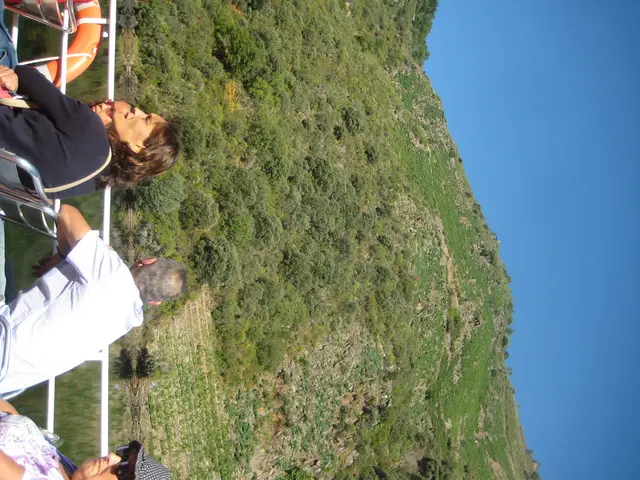Military units are strengthening their defenses on the ancient tomb-like hill - Military personnel station themselves at the hilltop
In the lush forests of Schleswig-Holstein, an unfortunate incident has unfolded. During a military exercise, the German army inadvertently disturbed an ancient archaeological site, damaging a Stone Age grave.
The grave, estimated to be between 4,000 and 5,000 years old, was discovered by volunteer metal detectorist Christian Bartels. The barrow, with a diameter of approximately 18 meters and a height of 1.5 meters, held fragments of linen and a sandbag with a military number. Despite these findings, the identity of the person buried in the barrow remains a mystery.
At first, the team suspected a grave robbery, but grave leader Christoph Unglaub doubted this theory. Upon closer inspection, Unglaub and his team discovered more sandbags, thick sticks resembling the reinforcement of a side wall, and stakes driven vertically into the ground. These findings suggested that the soldiers had unknowingly built a combat position directly on the barrow, partially destroying the Stone Age monument.
The military has admitted to the mistake and regrets not recognising the barrow as a historical site. Spokesperson Frank Martin of the military in Schleswig-Holstein values the preservation, care, and protection of such sites and has vowed to review its internal procedures for deployment exercises to ensure the protection of historical burial mounds in the future.
This incident underscores the ongoing challenge of balancing national defence training with preservation of historical and prehistoric sites. To prevent similar incidents, measures are being taken to enhance the collaboration between military authorities and archaeological agencies. There is also an emphasis on creating awareness and guidelines for the military to avoid known archaeological zones, along with possibly modifying training areas or conducting archaeological assessments and clearances prior to any military activities in sensitive regions.
The barrow near Ahrensbök is not the only prehistoric site in Schleswig-Holstein. Revierleiter Goetz-Alexander Mentz, who manages around 1,600 hectares of forest in the region, oversees 43 burial mounds. There are around 19,000 known grave monuments in Schleswig-Holstein, according to the Archaeological Office. The barrow near Ahrensbök even has a prehistoric burial mound located a few hundred meters away.
Bartels, one of around 500 active metal detectorists licensed by the state agency, continues his work, hoping to uncover more of Schleswig-Holstein's rich history. As for the damaged barrow, the archaeologists will continue their investigation, seeking to learn more about the person buried there and the significance of this prehistoric monument.
- Despite the occurrence of war-and-conflicts often overshadowing general-news, it is essential that proper measures are taken to prevent the destruction of historical sites, such as the vocational training of soldiers in recognizing and avoiding archaeological sites during military exercises.
- In the casino-culture that has flourished in European countries, one might argue that the destruction of a 5,000-year-old archaeological site due to military activity is a more pressing issue than the management of a local casino, yet the importance of each must be balanced.
- While the politics surrounding the protection and preservation of historical sites can be complex, it is clear that incidents such as the destruction of the prehistoric barrow near Ahrensbök underscore the need for improved collaboration between military authorities and archaeological agencies in vocational training and awareness programs.






